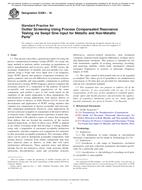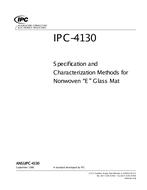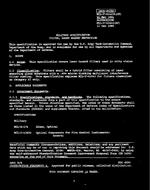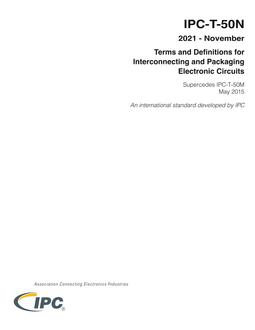
ASTM E3081-16 PDF
Original price was: $62.00.$37.00Current price is: $37.00.
Standard Practice for Outlier Screening Using Process Compensated Resonance Testing via Swept Sine Input for Metallic and Non-Metallic Parts
standard by ASTM International, 12/01/2016
1.1 This practice describes a general procedure for using the process compensated resonance testing (PCRT) via swept sine input method to perform outlier screening on populations of newly manufactured and in-service parts. PCRT excites the resonance frequencies of metallic and non-metallic test components using a swept sine wave input over a set frequency range. PCRT detects and analyzes component resonance frequency patterns, and uses the differences in resonance patterns between acceptable and unacceptable components to perform non-destructive testing. PCRT frequency analysis compares the resonance pattern of a component to the patterns of known acceptable and unacceptable populations of the same component, and renders a pass or fail result based on the similarity of the tested component to those populations. For non-destructive testing applications with known defects or material states of interest, or both, Practice E2534 covers the development and application of PCRT sorting modules that compare test components to known acceptable and unacceptable component populations. However, some applications do not have physical examples of components with known defects or material states. Other applications experience isolated component failures with unknown causes or causes that propagate from defects that are beyond the sensitivity of the current required inspections, or both. In these cases, PCRT is applied in an outlier screening mode that develops a sorting module using only a population of presumed acceptable production components, and then compares test components for similarity to that presumed acceptable population. The resonance differences can be used to distinguish acceptable components with normal process variation from outlier components that may have material states or defects, or both, that will cause performance deficiencies. These material states and defects include, but are not limited to, cracks, voids, porosity, shrink, inclusions, discontinuities, grain and crystalline structure differences, density-related anomalies, heat treatment variations, material elastic property differences, residual stress, and dimensional variations. This practice is intended for use with instruments capable of exciting, measuring, recording, and analyzing multiple, whole body, mechanical vibration resonance frequencies in acoustic or ultrasonic frequency ranges, or both.
Product Details
- Published:
- 12/01/2016
- Number of Pages:
- 9
- File Size:
- 1 file , 370 KB
- Note:
- This product is unavailable in Russia, Ukraine, Belarus



